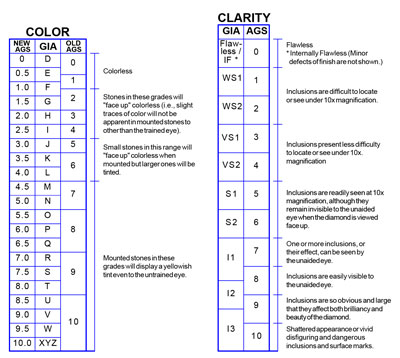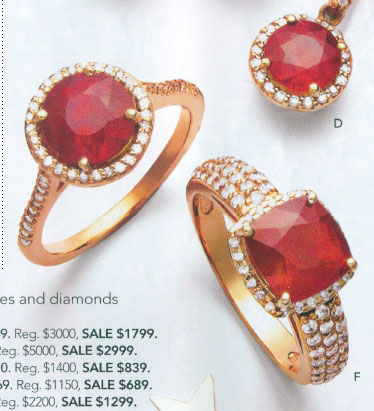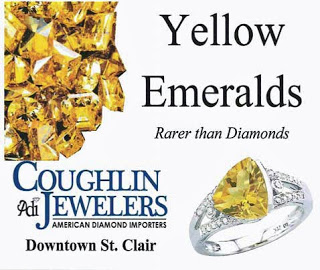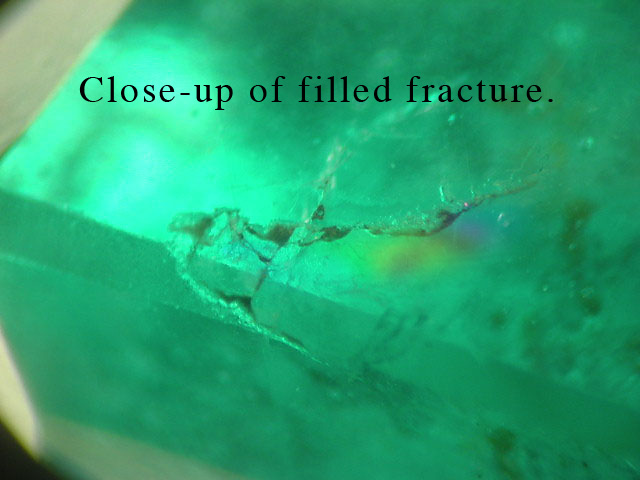FTC Guidelines for jewelry
The Federal Trade Commission aims to "protect consumers from unfair and deceptive practices in the marketplace."
The FTC's recently revised Jewelry Guides address a number of issues – and even controversies – that we've covered here in JII. The Commission seeks to clarify marketing terminology so it is accurate and as clear as possible to the average consumer.
Jewelry insurers can also benefit from this information.
Here are some important recommendations in the FTC Jewelry Guides:
Diamonds
There has been recent controversy, one might even say publicity feuding, about whether lab-made diamonds are really diamond. The FTC Guides says Yes, diamond made in a lab has the same optical, physical and chemical properties as diamond mined from the earth, so it is diamond. The commission no longer defines a diamond by using the word natural.
The Guides say a lab-made diamond must be accompanied by "clear and conspicuous" disclosure that it is lab-made. Suggested terms are laboratory-made, laboratory-grown, or man-made. But the Commission no longer recommends using synthetic, as this term is often misunderstood to mean imitation.
The lab-made disclosure should be where the consumer is likely to see it. It should not be, for example, on a website's separate Diamond Education page. In an FTC blog, a Consumer Education Specialist noted that most of the problematic advertising was spotted on social media, where disclosure is sometimes relegated to a hashtag.
Since there is currently a significant price difference between mined and lab-made diamonds, JII has discussed the importance of disclosure at every step of the selling chain.
When claims of quality are made, says the FTC, the grading system should be disclosed. The GIA and AGS Color and Clarity charts shown here are from the JISO 78/79 form. JII recommends the GIA Clarity and Color grading systems, as they are internationally respected and widely used.
The FTC advises against advertising jewelry or gems as "eco-friendly" or "sustainable" without explaining exactly what is meant, since there are too many ways for consumers to interpret such terms. In fact, the FTC has an entirely separate set of guidelines for environmental claims that apply to advertising any product, not just jewelry. See JII's discussion of the issue in What is an eco-friendly diamond?
Other gems
The Guides say it is deceptive to use the gem name, such as ruby, sapphire, etc. for a lab-made, imitation or simulated stone, unless the gem name is "immediately preceded with equal conspicuousness" by laboratory-created, imitation, or simulated, to disclose that it is not a mined gemstone. Even lab-made gems with the same optical, physical and chemical properties as the mined gem must be qualified as lab-made.
Marketers may use the word cultured for a lab-made stone, but that word also must be qualified by a term such as laboratory-created or man-made or [manufacturer]-created. See here for our earlier discussion of some of these terms.
A product made with gemstone material + any amount of filler or binder (such as ruby material + lead glass) must be marketed with an explanation of its composition and any special care required. It would be deceptive to call this product simply "ruby" or "treated ruby" or "composite ruby" or "hybrid ruby", etc., without a clear explanation that this piece does not have the characteristics of a mined gem. Many customers were duped in the Macy's scandal over undisclosed leaded rubies some years ago.
The FTC says it is unfair or deceptive to use the word real, genuine, natural, precious, semi-precious or similar terms to describe any industry product that is manufactured or produced artificially.
Some sellers have gotten creative in their gem-naming, to lend unfamiliar stones an aura of prestige. The FTC says it is deceptive to describe a gem with the incorrect varietal name, such as "yellow emerald" for golden beryl or "green amethyst" for prasiolite.
Gem treatments
The Guides affirm that it is deceptive to fail to disclose a gem treatment if the treatment is not permanent, if it creates special care requirements, or if it significantly affects the gem's value.
Non-disclosure of treatments is an ongoing issue, as we've discussed many times. Fracture-filling, or clarity-enhancement, and color enhancements are especially common and problematic.
Metals
The Guides say that using the word gold, without qualification, is appropriate only for 24-karat gold. For jewelry of less that 24k, the fineness of the gold must precede the word gold, such as 18k gold. This is also true for gold plate, gold overlays, etc.
Similarly, silver items below 925 ppt (parts per thousand) purity and platinum items below 950 ppt should be preceded by the correct designation for the fineness of the alloy.
A silver piece must be at least 925 ppt to be called sterling or solid silver.
Quality marks should be of sufficient size to be legible to people with normal vision.
When a precious metal is coated with rhodium to improve its appearance, that coating must be disclosed, as it can wear off and change the
appearance of the jewelry.
Handmade
A "handmade" item must be entirely made by hand, with no machinery involved, including CAD software.
FTC Guides are not laws.
They are interpretations of laws against false advertising.
The Guides are updated from time to time because the marketplace changes. New products and technologies, shifting terminology, innovations in advertising media and retail practices can all affect the way consumers understand what's being advertised.
Clear and accurate marketing benefits insurers as well as consumers.
FOR AGENTS & UNDERWRITERS
An agent or underwriter cannot be expected to know all the FTC guidelines on jewelry. We touch on them here just to give insurance professionals an idea of what's involved in fairly describing jewelry for sale.
All scheduled jewelry should have a detailed descriptive appraisal from a reliable gemologist appraiser who is independent of the seller. Recommend a trained and qualified gemologist (GG, FGA+, or equivalent), preferably one who has additional insurance appraisal training. One course offering such additional training is the Certified Insurance Appraiser™ (CIA) course of the Jewelry Insurance Appraisal Institute.
The best appraisal includes the JISO 78/79 appraisal form. This form complies with all the recommendations of the FTC Guides.
FOR ADJUSTERS
If you are dealing with appraisals that are poorly organized, transfer the details to JISO 18, the Jewelry Appraisal and Claim Evaluation form. Then you'll have all information in an organized format for generating reports or pricing replacements.
Whether through ignorance, carelessness or deliberate fraud, information about gem treatments is often lacking on appraisals. All information about the jewelry's quality affects its value.
When a replacement is needed, it can be useful to consult a trained gemologist appraiser (GG or FGA+), who can review the documents from the replacement source with appraisal documents on file to be sure the replacement jewelry is appropriate to make the insured whole.
©2000-2024, JCRS Inland Marine Solutions, Inc. All Rights Reserved. www.jcrs.com







